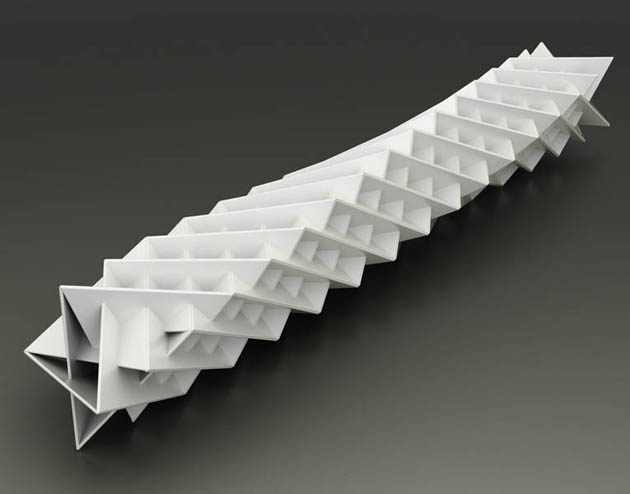Abstract
This article describes two new groups of uniform polyhedra as well as the construction of the models of some of them. It is possible that these groups has been discovered before, but I have been unable to find any publication about it. I welcome any information about earlier publication.
1. Introduction
1.1. First Discovery. Can you imagine that the object in Figure 1 is a uniform polyhedron?

Figure 1: Helical Star Deltahedron 9-4(2)
A polyhedron is a finite set of [planar] polygons such that every side of each belongs to just one other, with the restriction that no subset has the same property. The polygons and their sides are called faces and edges. The faces are not restricted to be convex, and may surround their centres more than once (as, for example, the pentagram, or five-sided star polygon, which surrounds its centre twice). Similarly, the faces at a vertex of a polyhedron may surround the vertex more than once. A polyhedron is said to be uniform if its faces are regular while its vertices are all alike. By this we mean that one vertex can be transformed into any other by a symmetry operation.”
Polyhedra are surfaces composed of polygons such that each edge is adjacent to two polygons. Regular polyhedra are those that are composed of only one type of regular polygon. Because of the Coxeter’s discovery of the infinite regular polyhedra clearly we can generalise the definition quoted above even more by removing the word “finite”. After looking at my construction, with the definition in mind, I came to the conclusion that this might be an interesting discovery. To explain this step by step, we have to go back to history of the regular polyhedra.
2.1. Platonic Solids. About 350 B.C. Plato decribed the five convex regular polyhedra (Figure 2) in his book Timaeus. It can easily be proven that there are exactly five convex regular polyhedra.

Figure 2: The Platonic Solids